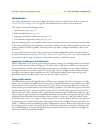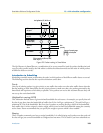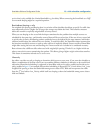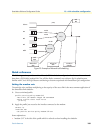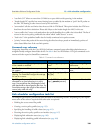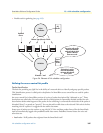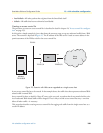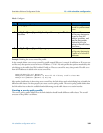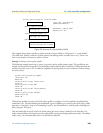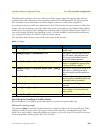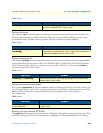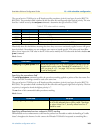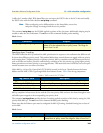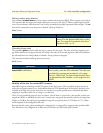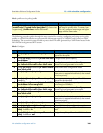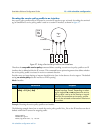
Link scheduler configuration task list 160
SmartWare Software Configuration Guide 13 • Link scheduler configuration
Figure 26. Structure of a Service-Policy Profile
The template shown above specifies an arbiter with three inputs which we call “sources”: x, y and “default”.
The traffic-class “default” stands for all other packets that belong neither to traffic-class x nor y. There is no
limit on the number of sources an arbiter can have.
Example: Creating a service policy profile
The following example shows how to create a top service-policy profile named sample. This profile does not
include any hierarchical sub-profiles. The bandwidth of the outbound link is limited to 512 kbps therefore the
interface rate-limit is set to 512. In addition weighted fair queuing (wfq) is used as arbitration scheme among
the source classes.
profile service-policy sample
rate-limit 512
mode wfq
source traffic-class local-voice
priority
source traffic-class Web
share 30
source traffic-class local-default
share 20
source traffic-class default
queue-limit 40
share 50
The first line specifies the name of the link arbiter profile to configure. On the second line the global band-
width limit is set. The value defining the bandwidth is given in kilobits per second. Each service-policy profile
must have a “rate-limit” except if no scheduling is used i.e. the link scheduler is used for packet marking only
(like setting the TOS byte).
How the bandwidth on an IP interface is shared among the source classes is defined on the third line. The
mode command allows selecting between the weighted fair queuing and shaping arbitration mode. The default
mode is wfq - the command shown above can therefore be omitted.
profile service-policy <profile-name>
common settings
link rate, arbitratio
n
source traffic-class <x>
settings for class x
source traffic-class <y>
settings for class y
source traffic-class default
settings for all other
traffic-classes not listed
common parameters
bandwidth, packet mark
queue-size, etc.



